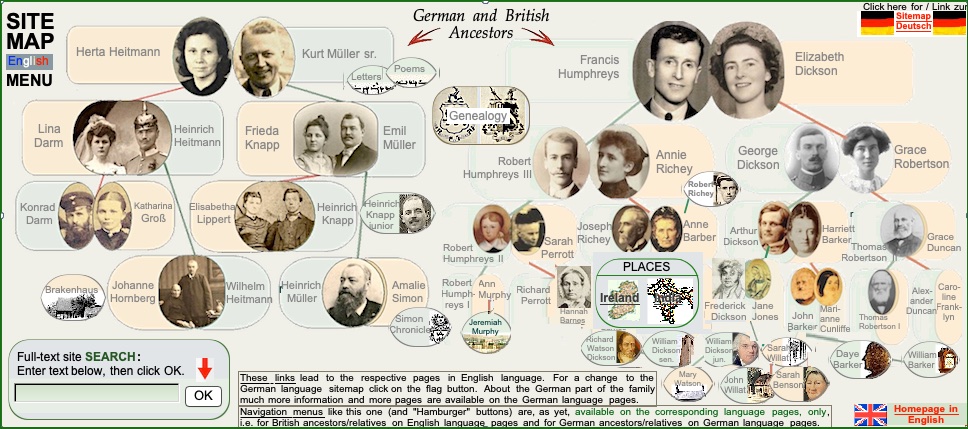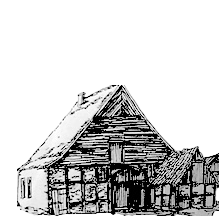baptised on 19 December 1785 in Glenmuick, Scotland
died on 5 June 1872 in Lexton, Australia
died on 5 June 1872 in Lexton, Australia
© Kurt Müller 2016




Homepage auf
Deutsch
Deutsch




Homepage in
English
English
Thomas Robertson
(I)




Diese Seite auf
Deutsch
Deutsch
Family history Müller - Humphreys

In 1851 the state of Victoria was created. Thomas Robertson and William Skene dissolved their partnership; Thomas started a new partnership,
Thos. Robertson & Sons
.
There followed a period of massive development. Gold was discovered in New South Wales and Victoria; fortune-seekers flooded in. The Robertsons stuck with their sheep, and prospered enormously. They were part of the "squattocracy", squatter aristocracy who had parcelled up great tracts of Australia.
By the start of 1872 Thomas Robertson (I) did not have long to live, and a Deed of Dissolution was signed on 9th February. The firm's holdings were then valued at £291,150. A Deed of Arrangement made the same day divided the property between the three brothers James, John and Thomas. (The holdings would now {2016} be worth between £23 million and £429 million, depending how the value is calculated.).
The family remained in Victoria, until the elder Thomas (I) died. He died at Mount Mitchell (see right) on 5th June 1872, aged 86, after living 32 years in Australia. Lexton, the place where he died, is situated in the state of Victoria, on the Sunraysia Highway between Ballarat and Avoca, and was originally known as Burnbank when it was first settled in 1843.
John Humphreys continues:
The younger members of the family were thus found jobs - Thomas junior was apprenticed to a printer, believed to be the publisher of the
Port Philip Gazette
(one of three newspapers produced in Melbourne at the time). However he did not stay with this new profession. His father acquired the Moora Moora run in 1848, and sent John and Thomas to superintend it.
Thomas senior told his daughter that he had been able to rent a house, and it is clear from the contents of the letter that he planned on buying stock and farming them.
He implies that this will involve travel inland, as he reports that land near Melbourne is very expensive, but indicates that his financial situation is adequate for a promising start in the new homeland.
In 1844 Thomas senior, taking his sons James and John, travelled to join William Skene at his new stations, Mount Mitchell and Maiden Hills. Nearby was Burrumbeat station, belonging to the Learmonth family. On 6th July 1843 his daughter and eldest child Jane (Jean) had married Willliam Skene. On 14th September 1843 Thomas Learmonth "went to Mr. Skene's and engaged Mr. James Robertson as overseer."
This was a speculative adventure without official approval; the British government was ill-prepared for the rush to colonise the vast new continent. It was seen as empty and free; eventually applicants had to have land surveyed (at their own expense) which could then be "gazetted" with the government, making ownership official. Distances were long, and there was a lack of suitable surveyors; Thomas Robertson finally managed to have Mount Mitchell gazetted in October 1848.
A common disease of sheep was called Scab. Prevention was attempted using sheep dips made of "one pound of sulphur and one pound of tobacco"; for this purpose the squatters grew their own tobacco. (I have no idea how effective this mixture may have been against Scab or other sheep diseases, but the settlers used it routinely.)
In 1847 Thomas's daughter Margaret Philip arrived with her husband John, a sea captain, and two children (Elizabeth and Thomas); her third, James, was born on 19th February 1847, so she managed to travel inland from Melbourne while heavily pregnant. They travelled by bullock dray.
The Philip family moved on from Mount Mitchell and took over the lease of the Victoria Lagoon run in 1849.
That year Margaret wrote to her husband's brother and his wife, who were in Scotland:
The homestead at Mount Mitchell is a large, single-storey bluestone house. The long main wing has a pedimented portico on raised Tuscan columns and pilasters. At one end is a projecting wing with arcaded verandah and clerestory above. The stables are in rusticated masonry and are essentially intact. The roofs of all the buildings are slate.
Mount Mitchell is an unusual and distinctive homestead, of consequence architecturally and for its historical associations with the settlement of the district and with the Robertson family. The Italianate conservative classical design is given particular importance by the porch, which is particularly distinctive. The elaborate arcaded verandahs are also unusual and of note, as are the later round-headed windows. It is in good condition.
The stables have been restored and are intact.

Left: Mount Mitchell was designed by the prominent architect Charles Webb (1821 -98) and built in 1860 -61 for the Robertson family...

(I assume this means he didn't like the sight of naked natives.)

[He goes on to specify how his children, nephews and nieces all gained employment before even setting foot on dry land, adding detailed figures of the cost of foodstuffs and individual (live) animals, which are of good quality but costly.]
After their arrival
Thomas Robertson
(senior) wrote to his daughter Margaret Phillip and her husband, who were living in Aberdeen, in a letter* dated
Port Philip Feby 24th 1840
:
In 1839 the Robertsons emigrated to Australia. The
elder Thomas
took with him his children (his
son Thomas
was then fifteen) and the six children of his deceased sister Mary Gordon (the youngest was 11 years old). The young Robertsons all took advantage of government-assisted passages (bounty passages), which had only been introduced that year.
They sailed on the ship "
John Bull
" (705 tons; master, Captain Ormond), which left London on 22nd September 1839 and arrived at Melbourne on 21st January 1840 with 233 emigrants, 20 cabin passengers and merchandise.
From reports by John Humphreys:
The letter excerpts, as well as the one further below, are citations from the book by the Robertson descendant
Diana M. Halmarick: "Thos.Robertson & Sons, Mainstays of Our Earliest Days", Wantirna, Vic., Australia 2000
, which also was an enormously valuable source of much of the information used for this page in general. We have to pay tribute to her great achievement and deserving work of merit. Also for the possibility of showing Thomas Robertson's portrait painting in this page we express our most sincere gratitude to Diana Halmarick.


Menu


























































